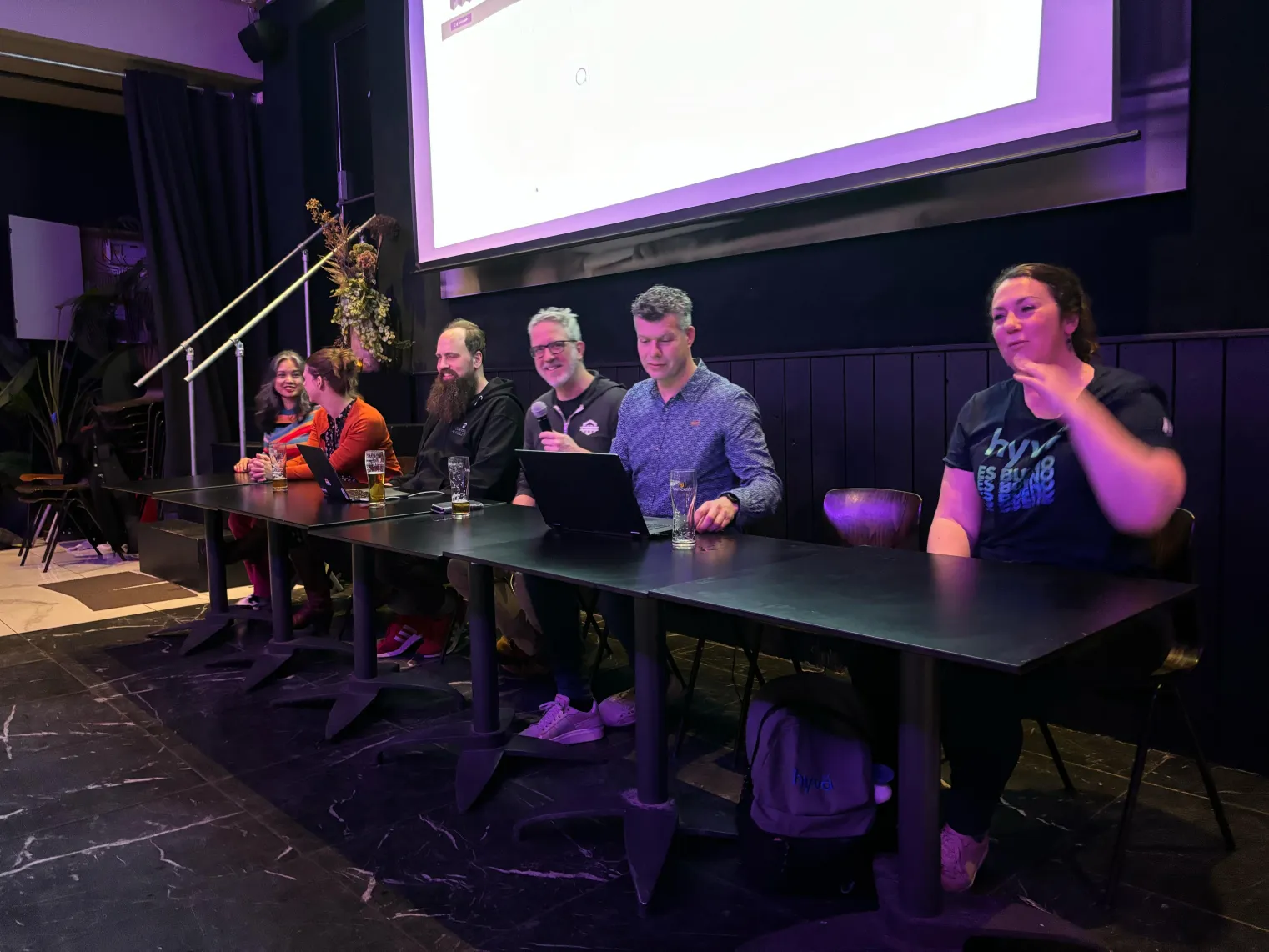On February 29th (a leap day), the second member meeting of Mage-OS Nederland took place: Hosted at the beautiful venue of De Rechtbank in the center of Utrecht (very close to the famous Dom Tower), a group of about 40 people came together to push the association into a new year. Here is a recap, but also some lessons for other local Mage-OS groups to learn from.
We did it: An association
The association was started by a group of people in 2022, who wanted to revive the Dutch Magento community after COVID and after some people left. Pretty soon, it was decided to revive things under the hood of a non-profit organization. At first, we subscribed as an informal association. However, the fact that all 7 board members were liable and the fact that bank accounts could only be opened with a formal association, moved us towards a notary and in the end, the association of Mage-OS Nederland was founded for real.
Disclaimer: Mage-OS Nederland its prime objective is to facilitate the Dutch Magento community. This definitely includes organizing Dutch events like Meet Magento Nederland and various other social gatherings. It also includes a proper mapping of the community. Clearing up confusion on the various distributions (Adobe Commerce, Magento Open Source, Mage-OS) could also be part of its activities.
But Mage-OS Nederland is not part of the open source initiative of Mage-OS. We are part of the same community though. The name Mage-OS Nederland was requested for usage by asking the board of Mage-OS worldwide.
See also https://nl.mage-os.org/ (Dutch and English)
New board
In 2022, various Magento community members joined forces – including Jeroen Boersma, Jisse Reitsma, Peter Jaap Blaakmeer, Sander de Graaf, Sanne Bolkenstein and Willem Wigman. In 2023, these people, excluding Peter Jaap and Willem, but with the addition of Core de Reeper, Michiel Gerritsen and Roland Haselager, formed the initial board of Mage-OS NL.
During the member meeting of February 29th, Core and Roland stepped down. Jeroen, Jisse, Michiel, Sander and Sanne remained their seat. And Karlijn Löwik and Tabitha Karta joined forces.
Technical mistakes
However, the democratic process of electing the board had some flaws though. Months before the meeting, we started to promote empty board seats. But only one month before, during the WWVD borrel, new candidates were found – that either wanted to be an actual board member or just do something nice for the community. In no time, the amount of candidates went up to 6, which was a bit too much. This led us to say that we only should add 2 board members (a total of 7 or 8) and that all others should be initiated as commissioner of some working group. We didn’t think of such an organization yet properly and because of this, we started to rush things. In the end, during the meeting, the board decided to stay seated and to allow for two more board members, which were strongly recommended by the board. No open elections, less democratic. But very practical to keep the energy.
Another flaw was that the finances were not presented yet before the meeting and there was no audit committee beforehand either. Because of this, the finances couldn’t be verified by the audit committee and therefore the board could not be granted discharge.
Because of these flaws and others, we decided to keep the board large this year, but split it up in two parts: One board-board that dives into the technicalities of running an association. And another board of committees to kickstart all of the work that needs to be done under the hood of the association.
Our lessons learned
Here are some of the lessons learned so far:
Make sure you start with the right legal form. In our case, opting for a formal association right away would have saved us a lot of time and frustration.
Draft a proper organization. Decide upon the size of the board. Form working groups that are accountable to the board for specific tasks – events, promotion, etc. Every working group should have a lead member (commissioner) and the responsibilities of both board and working groups should be clear from the start. We decided to go for a large board, which is at first okayish but will become more difficult to deal with over time.
Pick a small board (president, secretary, treasurer, possibly a fourth member), but make sure that these roles are easily swapped out. Currently with MOSNL, some things are tied to specific persons in the board (president, treasurer), while ideally this is swapped out. Also make sure to agree upon a maximum period for being a board member.
Setup a voting process for board members as detailed as possible. Make sure that candidates are found months in advance. As soon as they are found, even if it is just a single person, start promoting that person publicly. This might attract more candidates.
Because of all of the above, make sure to setup articles of association, which is a legal requirement in most countries. But it also important to have an agreement with all people involved on how this comes to being.
Without doubt, there are many more lessons here.
The why
Still, all of these struggles are worth it: The Dutch Magento community is currently in the hands of an association, not a commercial company. We are free from the copyright of Magento, which is nowadays a thing. And because we are a non-profit organization, it is straight-forward that anyone who is helping the association is doing this for the community its sake.
Already we are seeing the signs: Meet Magento NL, MageUnconference NL, MageTitans NL. Lots of volunteers to do things. And a healthy kickstart of an association to make all of this possible.


